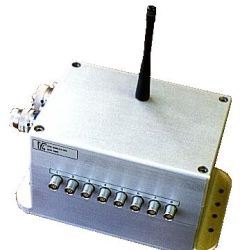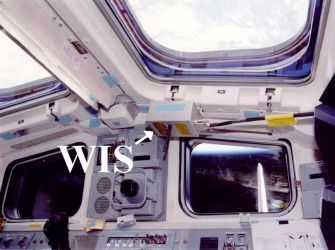Historical

The success of the WDAS experiment spurred NASA to award a series of Phase III contracts to apply the technology to environmental monitoring on the International Space Station (ISS). Invocon designed and built wireless data acquisition systems that have successfully flown on multiple ISS Assembly flights. Invocon is currently contracted to support flight operations. The system is divided into three types of hardware.
- Internal Wireless Instrumentation System—IWIS™
- Shuttle Wireless Instrumentation System—SWIS™
- Floating Potential Probe—FPP
IWIS, the internal, synchronized system, is deployed by the astronauts inside the partially completed ISS to collect data on the impulse response of the structure. This synchronized data is used to verify the structural integrity of the ISS on orbit. It will also be used to update models predicting the modal response of the ISS. Complete understanding of the resonant modes of the structure will allow effective planning of the re-boost and Reaction Control System (RCS) firing sequences when the Shuttle is docked with the Station. Since this data will change as the Station is assembled, it is important to keep this data current with each addition to the Station. The wireless nature of the data acquisition network minimizes the time necessary for deployment and recovery of the system. Further, some of the RCS test firings must occur when all airlocks between modules are closed. A wired system would not have the flexibility needed to accommodate mission changes and data acquisition windows of opportunity.

The SWIS or Shuttle-based system includes data gathering units that are installed on the outside of the Station modules prior to launch. Other data units are installed on the Shuttle sill longeron.
As the ISS modules are removed from the Cargo Bay and transferred to the assembly point on the Station, the SWIS data gathering units transfer sensor data from the ISS module to the Crew Compartment of the Shuttle where the data is downlinked to Mission Control for use by the flight controllers. In the event the WIS data gathering modules on the ISS loads are blocked from a direct line-of-sight to the Crew Compartment, the units on the sill longeron act as relays for the data. The SWIS system deliveries commenced in fall 1998. SWIS initially launched in September of 2000. Both IWIS and SWIS system units are currently installed on the ISS.

The Floating Potential Probe (FPP) was launched on ISS flight 4A and installed on-orbit to measure the floating potential of the Space Station relative to the local plasma environment. The measurements verify proper operation of ISS systems designed to maintain the potential within acceptable ranges and prevent arching.
Invocon delivered a wireless system based upon the SWIS/IWIS systems that provides for data storage at the probe and data transfer from the P6 photovoltaic truss element to a computer inside the Unity node of the ISS. The data is then displayed for the crew and downlinked to the ground for analysis.(Invocon developed the communication system for FPP. Other NASA contractors developed the solar power supply and sensors.)
General WIS Parameters:
- Programmable Sample Rates: 4.5Hz – 1KHz or 12Hr – 2sec sample periods
- Sensor Types: Strain, Temperature (RTD) and Acceleration
- Up to 64 channels per unit
- Approximate Size: Expandable from 9cm x 15cm x 11cm
View the full WIS Technology Profile (WIS.pdf)
